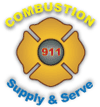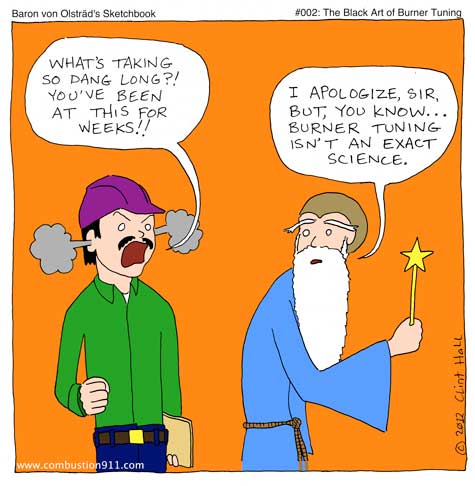The Black Art of Burner Tuning
An amusing pastime for learned instructors in the arts, such as myself, is watching the unlearned folk adjust their various combustion equipages on furnaces, ovens and boilers.
These people act as if tuning a simple burner is black magic rather than a proper procedure using sound scientific principles.
The basics to keep in mind when tuning burners are the following:
- First make sure your safety devices (gas and air pressure switches, flame supervision, etc.) are correctly set and in working order
- Remember that burners are really just fancy mixers of air and gas – but the proper amount of both is of critical importance
- Lighting a burner requires completion of the famous fire triangle (heat, fuel, oxygen) – once you achieve the right amount of gas (fuel) and air (oxygen), all that is needful is to supply a spark (heat) and flame is manifest
- Burner manufacturers publish empirically proven air and gas settings necessary for ignition and operation of their burner – never tune a burner without this information!
- Use quality tools to help you determine flows of air and gas as well as exhaust gas composition (especially the amount of O2)
- Practice, practice practice1.
Of course, beyond the basics there can be many challenges setting a burner correctly. Igniters need to be clean to provide a competent ignition spark, blower and fuel filters should be changed regularly so flow is unimpeded by detritus, and flame sensors need to be cleaned and tested frequently to make sure you don't go BOOM2.
For scientifically sound, professional combustion tuning, engage my master students at Olsträd Engineering. Fair rates, top-notch service, and no dead chickens.
1 My student Nicola Telsa mastered this in an hour. It took Thomas Edisen 99 hours to become adequate…
2 Fireworks can be quite enjoyable (especially with a good sherry), but almost never in a furnace or oven




